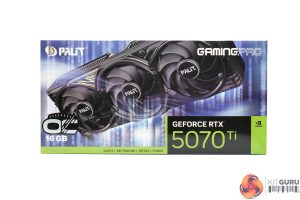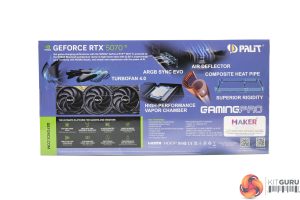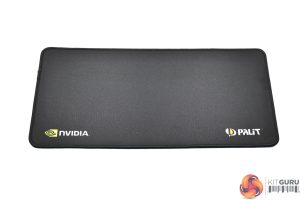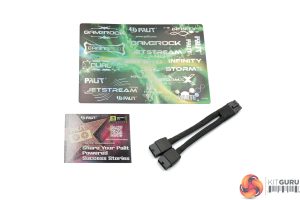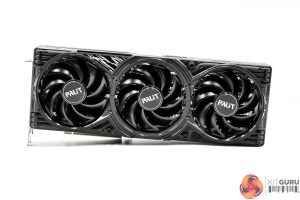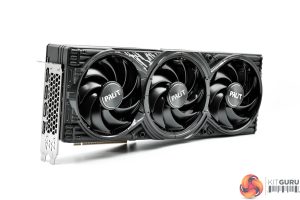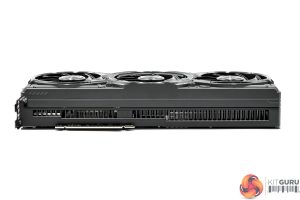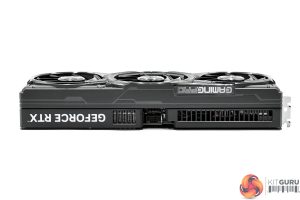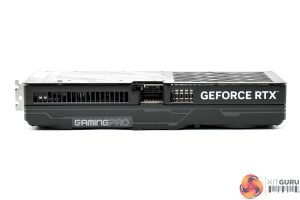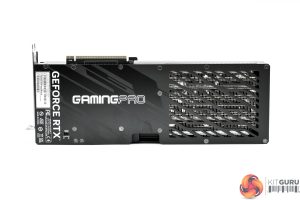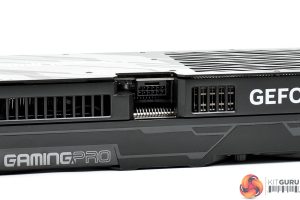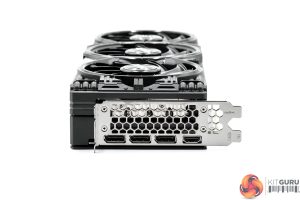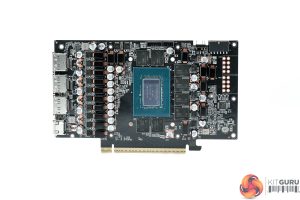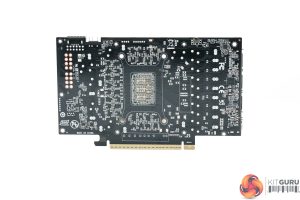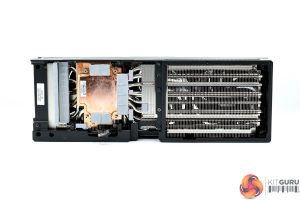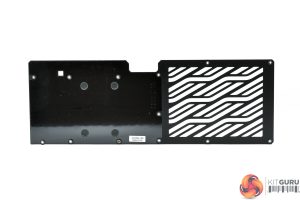The Palit RTX 5070 Ti GamingPro OC ships in a blue box with a large image of the graphics card visible on the front. On the back, Palit mentions a few key areas of the graphics card.
Inside, a small mousepad is included, Nvidia and Palit branded, along with a whole bunch of stickers and the dual 8-pin power adapter.
The graphics card itself is visually identical to the RTX 5080 model we looked at earlier in the year. That means it is sporting the same shroud design, which is plain black all over, but with some glossy sections which add some reflectivity. I don't think it's ugly per se, but compared to the MSI Vanguard SOC model we reviewed recently, it does look less refined to my eye.
It does still offer three fans as part of the cooling solution, with each measuring 100mm in diameter.
Dimensions are identical to the 5080 model, measuring 331.9 x 127.1 x 60 mm, while it weighed in at 1581g on my scales.
The front side of the card is home to the GeForce RTX and GamingPro logos, the latter of which is illuminated by RGB LEDs.
As for the backplate, it's another full-length metal design, but almost half of it has been cut out to act as the ‘flow through' area, though it's not completely open as Palit has opted for a vented approach.
There's also a BIOS switch positioned near to the I/O bracket, offering users a choice of Silent or Performance modes, with the former operating a more relaxed fan curve.
Here we can see the RGB lighting in action, and you can also connect an ARGB cable to the card and control the lighting via your motherboard if that is your preference.
As expected, power is delivered by a single 12V-2X6 connector. Display outputs consist of three DP 2.1 and one HDMI 2.1 ports.
Looking now at the PCB, it's quite densely packed, offering 14 phases for the GPU, and 3 for the memory. Monolithic Power Systems MP87993 MOSFETs are used throughout, and these are rated at 50A. The GPU VRM is controlled by a Monolithic MP29816 controller, while a Monolithic MP2988 handles the memory VRM.
Internally, the heatsink also appears identical to the RTX 5080 model, given Palit is using a vapour chamber to contact the GPU and memory, though the MOSFETs are cooled by separate baseplates. The fin stack utilises a total of eight heatpipes.
No thermal pads are used on the rear of the PCB to contact with the backplate.
 KitGuru KitGuru.net – Tech News | Hardware News | Hardware Reviews | IOS | Mobile | Gaming | Graphics Cards
KitGuru KitGuru.net – Tech News | Hardware News | Hardware Reviews | IOS | Mobile | Gaming | Graphics Cards


